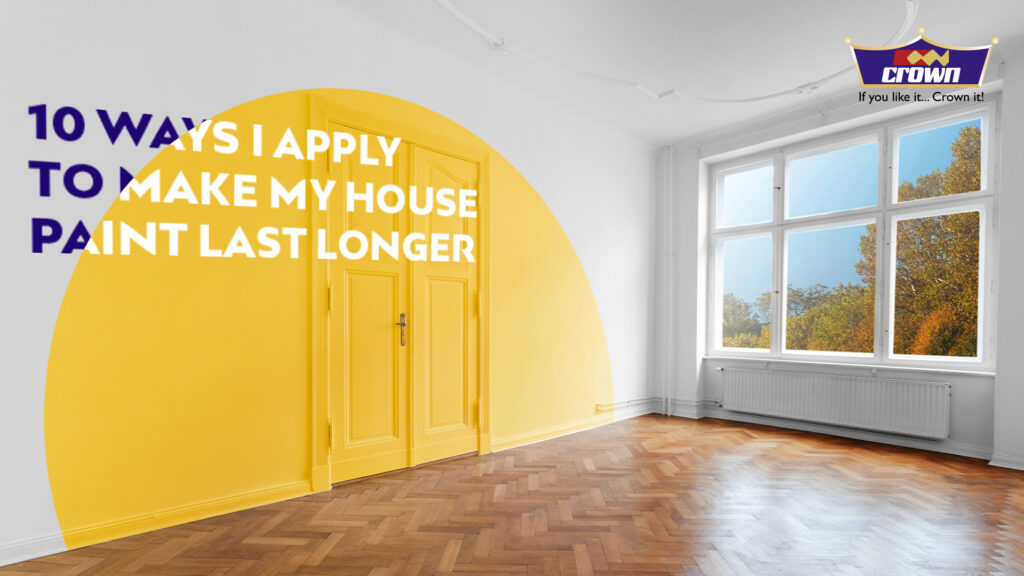
If you are like me then saving time and money is at the top of my list. This is especially true when it comes to painting sections of my house that I feel I can ‘DIY’ to save a few coins. I am not a professional painter but how hard can it be, right? Well… not as easy as you think. In my journey of trying to save a coin here and there, I have had plenty of mistakes in the quest to get it right. So here are a few tips and hacks that make repainting your space hustle free
- Taking off tarnished paint
In order to achieve great and long-lasting results, scrape off any old, flaking paint. It is disastrous to omit this step! why you may ask? Because the new layer of paint will flake more quickly if you leave old paint on the walls. To prevent thin, exposed spots in the new coat of paint, smooth the rough edges of the wall with sandpaper.
2. Preparing the area to be painted
The biggest enemies of a good paint job are dirt and detritus. These particles’ slick surface prevents the paint from sticking to the desired surface. To get rid of them, you need to use a towel dampened with clean water and detergent to clean my painting surface at least twice (you can never be too careful). When painting any exterior surface look out for toxins like mushrooms and cobwebs. If present, use water and bleach to clean them.
3. Fixing broken surfaces
After scraping off the old paint, there may be gaps and cracks, but don’t worry, what you need to do is make the opening deeper first so that you can clear away any debris and any old fillings. After finishing, fill in the cracks with fresh filler. Before applying sealers to the wall, smooth down the surface using a willing knife, which is available at any local hardware store.
4. Applying primer
Apply a primer before painting to help the paint adhere better and last longer. The primer creates a smooth, even surface that the paint can easily bond to.
5. Using High-Quality Paint:
Always choose high-quality paint for any painting job. High-quality paint makes any paint job last longer. It is more durable and resistant to fading, chalking, and cracking.
6. Employing the Proper Painting Method
The right painting technique is crucial for achieving the right results, from paint thickness to painting patterns. When the paint dries, the walls with an excessively thin coat will have a dreary appearance. On the other hand, too thick a coating can crack. Although it may not seem like painting walls calls for any artistic talent, one must use the proper stroke technique. Using the right painting technique can help the paint adhere better and last longer. Even strokes will give a better result. Also, avoid overloading the brush or roller with paint.
7. Finding the right time
Humidity, wind, and harsh sunlight are not your friends. Extremely hot temperatures may cause the paint to dry before you can apply it evenly. Meanwhile, humid weather will create bubbles on a painted surface. Therefore, choose to paint in the shade when the weather is cool and dry.
8. Using the right tools
The quality of the tools and materials you use can affect the durability of the paint. Ensure the surface is covered with primers and undercoating before the painting starts. Crown Interior/Exterior emulsion Undercoat and Crown Acrylic Primer Sealer Undercoats are a fantastic option because it combines the benefits of primers and sealers.
9. Protecting the Painted Surface
Make sure you protect the painted surface from damage. Avoid direct contact with sharp objects or abrasive materials. Choose abrasion-resistant paint where there is exposure to high traffic.
10. Maintaining the Painted Surface
You can increase the lifespan of the paint job by taking routine care of the painted surface. Periodically scrub the surface with a mild soap and water solution to get rid of dirt and grime. However, don’t use abrasives or strong chemicals because they can harm the paint.
Visit the Crown Your Space website to find professionals who can advise on a long-lasting painting project.






